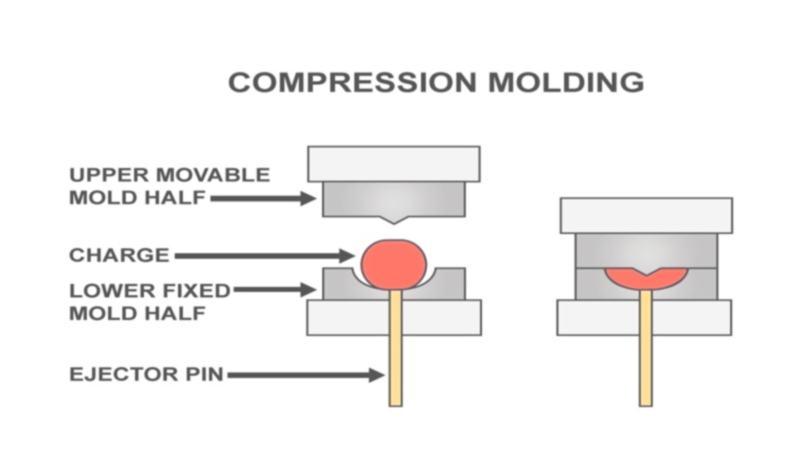
Specialize in Compression molds

Specialize in Compression molds
When making a new part, you have to make a decision, or you just leave the decision to someone else. In either case, it's helpful to know the key differences between transfer molding and compression molding.

Transfer molding processes use thermoset materials or preforms. There are two transfer molding processes: 1. Can transfer molding: The charge is injected from the "can" into the cavity through a vertical sprue channel. 2. Plunger transfer molding: The plunger is injected into the charge through a horizontal channel in the cavity. The mold remains closed during curing, then the plunger is lifted and the transfer material is removed. The mold is then opened and the part can be removed.
Transfer molding is capable of forming more complex part shapes than compression molding, but not as complex as injection molding. Transfer molding is very common in the production of electronic devices such as integrated circuits, capacitors and diodes.
Transfer molding offers several advantages, such as.

Compression molding is a time-tested and widely used thermoset plastic molding process. It is used to mold automotive parts, electrical equipment, new bathrooms, etc. A precise amount of molding compound is loaded into the lower half of a heated mold, the compression mold is closed and heat and pressure are applied. As the cavity is filled, excess material fills the mold's overflow grooves. Afterwards, when curing is complete and the mold is opened, demolding is performed to remove any flying edges.
Compression molding is a good option for very hard or difficult-to-flow materials because it does not require pushing the plastic through a gate or runner. This molding technique is also used for very expensive materials, large parts and small batch applications, other uses include large cross-section parts that require long curing times.
Advantages of compression molding in their respective applications include
The biggest disadvantage
| comrpression molding | Transfer Molding | |
| Feeding | The mold is opened during feeding, and the material is placed in the proper position in the mold | The mold is closed during feeding, and the heated blank is placed in the feeding chamber |
| The temperature of the material before molding | Cold powder or blank, high frequency heating blank placed at 105~138°C | High frequency heating blanks at 105~138°C |
| Mold temperature | 130 ~ 200°C | 140 ~ 180°C |
| Clamping pressure | 15 ~ 70MPa, for every 1cm increase in product depth, increase by 2MPa | Pressure injection plug 40~70MPa, the minimum tonnage of clamping injection plug should be equal to 75% of the pressure exerted by the pressure injection plug on the mold shell |
| Cure Time | 30 ~ 300s | 45 ~ 90s |
| Mold Exhaust | Frequently used, outgassing to shorten curing time | Neither feasible nor necessary |
| Moulded product size | Depends on the capabilities of the press | Up to about 0.5kg |
| Inlay Adoption | Restricted, the inserts are easily displaced or deformed after the mold is closed | Unlimited, easy to place complex inserts |
| Product Dimensional Accuracy | Medium (depending on mold structure and molding direction) overflow mold is the worst; non-overflow mold is the best; semi-overflow mold is in the middle | Good |
| Product Flash | Thick | Thin or None |
| Product shrinkage | Small | Larger than compression molding |
Comparison table between compression molding and transfer molding processes
Before deciding on a molding process for your application, consult MDC to ensure that compression molding is the best fit for your production needs. MDC offers you excellent compression molded parts at competitive prices. Our experts are dedicated to managing your critical projects on-site and delivering parts or complementary lines at a lower price. Contact MDC today to learn more about our process. We'd love to hear about your project.
Contact US
Email: master@zjmdc.com
Tel: +86 576 84616076
Fax: +86 576 84616079
Mobile: +86 13906573507(Mr. Wang)
Address: No.116 mochuang road, Huangyan Xinqian street,Taizhou,Zhejiang,China